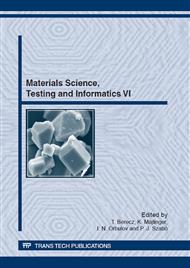p.415
p.419
p.424
p.430
p.436
p.442
p.448
p.455
p.460
Development of Nitinol Stents: Electropolishing Experiments
Abstract:
As a result of the collective efforts of engineers and physicians modern medicine is one of the most developed discipline nowadays. The invention of stents is one of the most important result of these works. With development of stents artery narrowing, which can often lead to death, can be efficiently treated. The stent is a biocompatible mesh, which is inserted into the narrowed section of the artery to dilate and prop up its wall hereby it ensures continuous blood flow. The bio-and haemocompatibility of stents have to be sufficient to avoid significant recurrent stenosis (restenosis). Better biocompatibility can be achieved using surface treatments such as chemical etching, electropolishing and coatings. In our research we developed self-expandable stents made of shape memory Ni-Ti alloy called nitinol. In this article the present stage of our work, the electropolishing experiments are summarized. A new electropolishing cell was worked out by using special stent holder to lead the current to the stent, which made possible the even electropolishing of the stent surface. The electrolyte, which was applied, contains less than 5% of perchloric acid. A current interval was determined which will be sufficient to determine the optimal polishing parameters, such as polishing time and current density with further researches.
Info:
Periodical:
Pages:
436-441
Citation:
Online since:
November 2012
Authors:
Keywords:
Price:
Сopyright:
© 2013 Trans Tech Publications Ltd. All Rights Reserved
Share:
Citation:


